PUTTING SOME TIME ON THE BOREALIS TELLURIDE

In early March, I received this Colorado designed beast of a fat bike from the gnome master himself, Gomez, to put through the paces for a couple months. You can find his initial impressions and unpacked review here. My duties were to feel the bike out in two modes; initially in full-fat mode with 27.5 X 4.5” tires and the stock carbon fork, then in “dryland” dress with a 120mm suspension fork and 4.0 versions of the tires. So, let’s take stock of what we actually have here shall we?

The Telluride is Borealis’ midpriced alloy trail fat bike offering. The frame is 6000 series aluminum with smoothed out welds and a finish so silky it was hard to convince people it wasn’t carbon. The detail in quality on the frame is immaculate. Beyond the welds are a nice set of cast dropouts and replaceable axle mounts. The frame also features impact armor on the down tube and chainstay, rear rack mounts and neat internal dropper routing. The rear axle spacing is 177x12mm and has an 83mm wide bottom bracket for a narrow Q factor. On the front end the Telluride is corrected for a 120mm travel fork with 150mm spacing. The full carbon fork provided ample clearance with the 4.5” tires and had a sleek look to it.

The $2950 price tag gets you a decent component spec as well. Most notably, a Manitou Mastodon 120mm suspension fork, Sram Eagle GX with a RaceFace Next R crank (30t), Sram Guide RSC brakes and a house brand cockpit consisting of carbon seat post and bars, a 50 X 35mm stem, racy saddle and Ergon grips. For wheels, you have two options, Hed Big Deal alloy rims or, how my test bike came fitted, Sun Mulefut 65’s laced to Borealis hubs with Wheelsmith spokes and Terrene Cake Eater tires in 27.5 x 4.0 or 4.5”. So all this put together sounds fun, but how does it ride?

The night I received the Telluride from Gomez, I immediately took it to my local, crusty snow covered trails for a quick lap. The 4.5” tires provided plenty of float and grip, even without studs. I did notice the tall stack height Gomez mentioned so I opted to leave the stem in the “slammed” position. Getting the seat height dialed was a cinch with the stock quick release.
A few days later we were off to the races in central Wisconsin for the Hugh Jass Fat Bike series finale. This would be my first outing on the bike in daylight and on fresh snow. The day prior to the race the venue received almost two feet of snow and while the course was groomed we weren’t sure how solid it would set up. I set the 4.5” Cake Eaters up at 5 psi for the start, but as soon as we hit the soft trail I realized that wasn’t low enough. The snow hadn’t set up and after a couple stops in the first few miles to let air out, I got down to wrinkle wall pressure and was able to lay some power down. This was also my first experience with the Sram Eagle GX 12 speed. Having a 50t cog out back was welcomed on a course where the deep snow forced you to stay in the saddle and spin up the steeper climbs. I was able to get acclimated to the bike in short time in the heat of competition and worked my way up to a satisfying position with no mechanical issues once I had the tires dialed. One thing to note, I did get some tire to chain rub on the larger two cogs even with the chainring in the outboard position. This is probably due to the large 4.5” tires and narrow bottom bracket. It was a minor issue that didn’t affect the performance negatively through out my time with the bike.

The next day I returned to the course when it was regroomed and firmly set up on a sunny 10F degree day. It was really fun to open the Telluride up and work the smaller end of the cassette over some hard, grippy corduroy. The bike is decently light and the large tires hold speed well but are a bit more effort to spool up. The bike handled the open trail nicely and was noticeably stable so it was a delightful first few rides of varying conditions on the gray beast.
This past Winter was not kind to our part of the midwest in the fact that we rarely received great snow for fat biking. So when it was cold enough to ride, our trails here were rough to icy. Spending some time in choppy conditions, I noticed how stiff the Telluride actually is. The carbon fork is stout and the 35mm bars and short stem send a lot of feedback to your upper body. While reassuring, if it proves a little wearing on you, you can always let some air out or switch to the suspension fork, which I was looking forward to doing next.

With winter waning, I swapped up to the Mastodon fork. While changing out the forks I noticed the carbon fork has the same axle-to-crown measurement as the fully extended Manitou(~533mm). Most rigid forks are suspension corrected to a length where the sprung fork would sag under a riders weight. This likely contributed to the feeling of a high “stack” height in rigid form. We had some hoofed up ice paths here I was able to dial in the settings on. The bike immediately felt better riding in it’s “sag”. The lower front end felt more natural and the Mastodon was great smoothing out the lumpy, pot-holed ice trail. The 4.5” tires still had plenty of clearance and offered confidence inspiring traction despite being studless.

I only fit a couple of these rides in when winter finally packed up and we were waiting in limbo for the trails to dry out and open. A couple weeks went by but Ma Nature eventually delivered and it was time to go full Summer mode on the Telluride with the 4.0” Cake Eaters. This is where the bike really came alive! The lighter weight tires and 120mm Manitou made the bike much more playful on dryland singletrack. Acceleration was snappier, air was easier to grab and cornering was carvier. Part of it is the 65mm Mulefut rims work really well with 4.0” tires. I’ve always felt 80mm rims with 3.8-4.0 tires work great in the snow, but the wider rims seem to stiffen and square off the tire a bit much for hard cornering on dry dirt. The 65mm rims give these tires a rounder profile which is nice for leaning into corners and allows the sidewall a little more suppleness to interact with the terrain. Likewise, I didn’t notice much detriment to using these rims with the 4.5” tires either as I was always able to adjust air pressure down to get the foot print I desired.

In technical terrain, I did find myself clipping pedals periodically through rocky or rooty sections. I’d attribute this to the lowish bottom bracket (70mm drop) and the 475mm long chainstays. On the larger tires these numbers are good but with the thinner rubber and an active suspension fork, your cranks can get a lot closer to the ground when hammering. After a few rides I was able anticipate this and “time” my pedal strokes, but it was something to be aware of.

I was able to put some longer 3-4 hour rides in thoughout my test and was happy to report the Borealis proved comfortable even on these longer stints. About the only thing I would change would be the Ergon GE1 grips for something a little fatter, but that’s just my personal preference. The geometry seems to be on the milder side of modern trail design but was appreciated a few hours in when you’re a getting worn out and want to sit up and not try so hard to lift the front wheel over things. With the Mastodon up front and supple 120TPI Cake Eaters, I was never too beat up after a several hour excursion.

Elephant In The Room? My Opinion on 27.5” Fat
So some of you may be reading this just to see how I feel about the now fashionable 27.5 inch fat wheel size and if it’s worth switching over. To be honest, in the 4.0 wheel size I couldnt really tell the difference. Tire, pressure and rim choice had far more effect than the 25mm difference in rim size diameter. The difference is more apparent in the larger volume sizes like 4.5”. Then I could notice different characteristics like additional inertia and angle of attack (rollover ability). So what’s the best wheelsize? In my opinion, staying within the tire diameter parameters your bike was designed for. The Telluride has a low bottom bracket and high front stack but I wouldn’t use anything smaller than a 26 X 4.8” as that would lower the bike down even more. Likewise, jacking up a bike designed for 26 x 4” to 27.5” will raise the BB and change the trail. Geometry is key and just because something “fits” doesn’t mean it’s going to be better. Currently, 26 inch. has the widest tire selection but 27.5 is catching up. So I would choose a bike based on what I wanted it to do, not necessarily what size rim size it has. Tires are only going to get better in both sizes going forward.

Conclusion..
Over my eight weeks on the Telluride, I really gained an appreciation for what the crew at Borealis had put together. For your money, you get immaculate frame and fork construction and finish, a solid component group, great wheelset choices and the option of one of the only winter rated suspension forks on the market in a fairly lightweight package. The geometry may not be the most aggressive but it is comfortable for long days and capable of spirited riding. The carbon bars and stem helped save weight but I would have gladly traded those towards having a dropper (ya, I’m one of those people now), buts that can easily be added. So, I think Borealis did a great job nailing a year-round fat bike and for that, I’d give them 4 outta 5 Gnomes (en fuego).



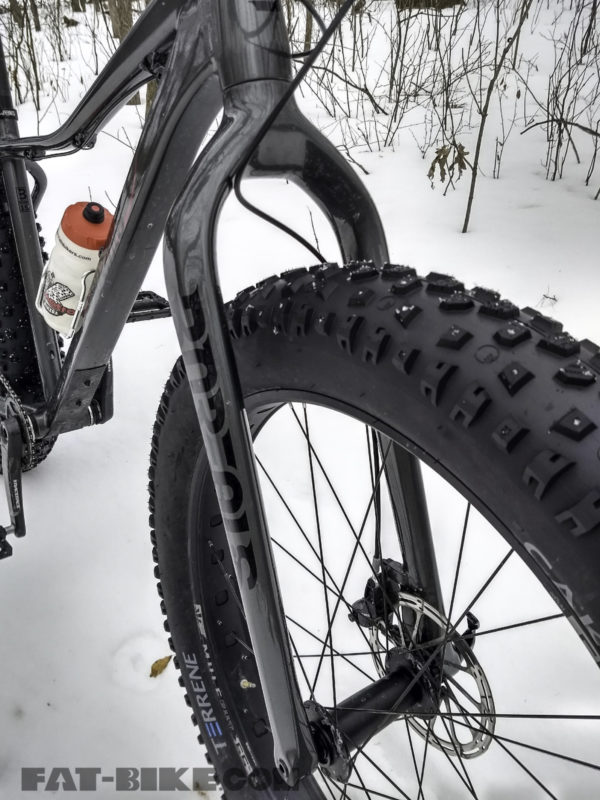
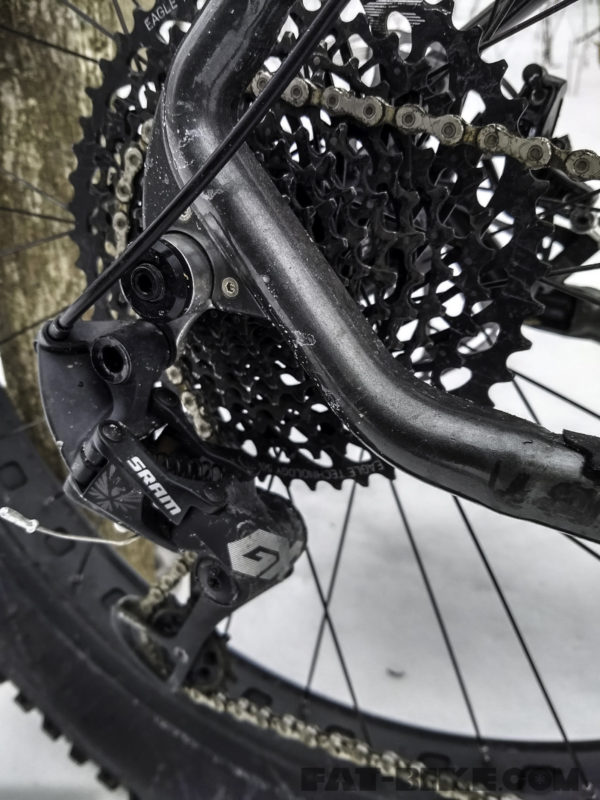
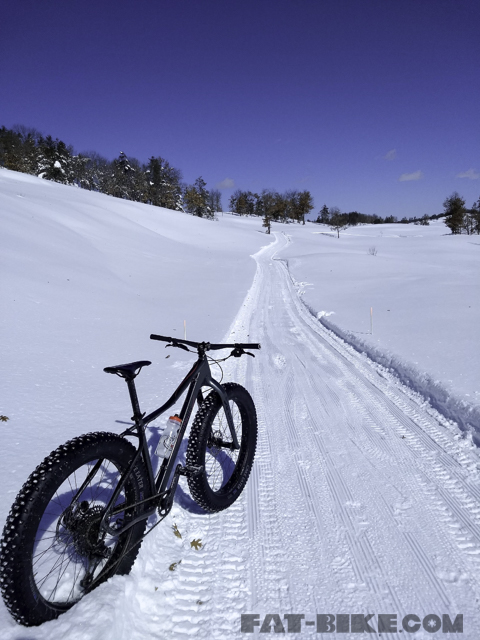
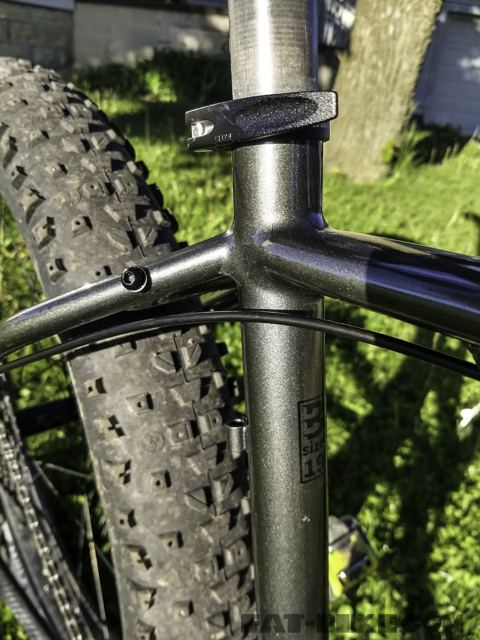
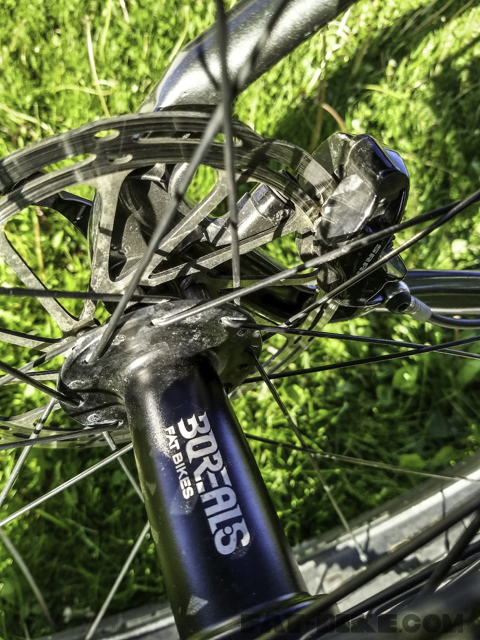
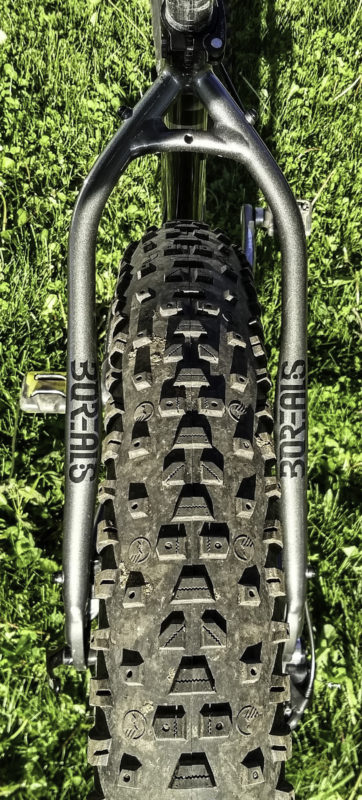
Great review! Thank you.